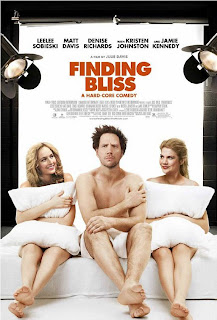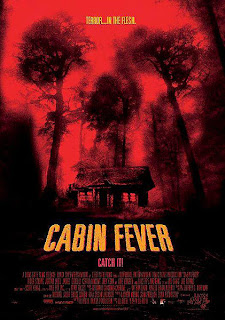"School for Good and Evil" has imagination and some fun performances but not much of an identity of its own
The School for Good and Evil (2022)
For a movie dividing its characters into hopeful heroes and villains, it’s only appropriate that “The School for Good and Evil” is a mixed bag. A large-scale fantasy that exists in a world where children of storybook princes, princesses, and witches attend a magic school is a fun idea, even if it sounds derivative of “Harry Potter” and the “Descendants” movies without the songs but with a bigger budget. Based on the 2013 first book in the fantasy fairy tale hexalogy by Soman Chainani, the film still feels so very familiar of a lot of franchise-starters with a lot of world-building terminology to learn first.
Having proven he can make hilarious comedies about female friendship (“Bridesmaids,” “The Heat”) and even a stylish, frisky, twisty dark comedy (“A Simple Favor”), director Paul Feig has earned the keys to make the next big Netflix money-maker. Adapted by author Soman Chainani and co-writer David Magee (2018’s “Mary Poppins Returns”), the film has some imaginative spectacle, ideas, and performances, but they’re mainly in the service of overlong, overly simplistic storytelling and some groan-inducing dialogue that's meant to be anachronistic and snarky. It isn’t truly good or bad, but merely follows a YA Fantasy algorithm without having much of an identity of its own.
The genesis of the titular School for Good and Evil begins with two powerful brothers, Rafal and Rhian (both played by Kit Young), who created the hallowed institution to keep balance between, believe it or not, good and evil in this fairy tale world. But, of course, one of them became power-hungry with the discovery of forbidden “blood magic,” killing the other. Many years later, it’s a new world and we meet two misfit best friends in the village of Gavaldon. Sophie (Sophia Anne Caruso) is a blonde, Cinderella-like seamstress who dreams of being a princess, and Agatha (Sofia Wylie) is offbeat enough to be suspected of being a witch. As Sophie wants to finally get out of town, she makes a wish at a wishing tree under the blood red moon, being whisked away—and Agatha following—to the School for Good and Evil. But Sophie is dropped on the Evil side and Agatha the Good side. Will these friends realize they were not misplaced and find their true selves on their chosen sides? Or, will they realize that everyone can have good and evil in them?
Sofia Wylie is particularly good as Agatha with a direct, no-nonsense appeal, and Sophia Anne Caruso is perky and sweet but more theatrical and interesting once her wicked side comes out (and she gets to don some gnarly make-up). Although first-years Sophie and Agatha are called “readers” for living in the outside world, their peers are descendants of other famous fairy-tale characters, like Hort (Earl Cave) being the son of Captain Hook and main love interest Tedros (Jamie Flatters) the heir to King Arthur. Those on the Good side are considered “Evers” and those on the Evil side are “Nevers.” It’s those little world-building details that turn out to be the most clever, and the effects of fanged pansies in a forest and a pumpkinhead scarecrow wielding a scythe are pretty cool, too. Everything that can be seen rather than heard—costuming, hair, and makeup—is dazzling.
Playing the competitive deans of their respective sides, Charlize Theron and Kerry Washington are hamming it up and having a ball. Seemingly borrowing Johnny Depp’s Mad Hatter wig, Theron gets to cackle as head villainess Lady Lasso, and Washington (with a hairstyle topped with different crowns and halos inspired by Beyoncé) gets to pour on the cheery enthusiasm as Professor Dovey. These two are giving such showy, self-consciously cute performances as if they know they’re in a kids’ movie. Of the other faculty members, Laurence Fishburne gets to employ his calm demeanor as School Master, and Michelle Yeoh is clearly having some fun as beauty teacher Professor Anemone, who can fail a student if they don’t smile well, but she has criminally less to do. Also, why does Patti LuPone only get one scene (as she did in Feig’s “Last Christmas”) as a bookstore owner? Why are the very funny Rob Delaney and Rachel Bloom given nothing funny to do or say as Sophie's father and stepmother? Credited as “The Storian”—a knowing device—Cate Blanchett does narrate the whole thing, adding a touch of more class.
If "The School for Good and Evil" may seem a little young, it still has worthwhile notions to impart, whether it's about empathy or the world being seen beyond black and white. In keeping with that young feeling, nearly every story beat and character arc to illuminate that messaging is so obvious that the waiting-around gets frustrating before 147 minutes are up. Perhaps a series format may have given this dense material more time to evolve more smoothly. The young romance sure does feel more obligatory, too, considering the film does refreshingly pivot from that trope. The use of today's pop songs comes across as pandering here rather than fresh, especially since Olivia Rodrigo’s “Brutal” was just heard in Netflix’s high school dark comedy “Do Revenge,” while 2WEI’s cover of Britney Spears’ “Toxic” at least makes more sense within the context of the scene. As a fantasy entertainment aimed at teenagers, “The School for Good and Evil” should appease its target audience and those who have torn through this series cover to cover. For everyone else, it feels like another ambitious also-ran with Paul Feig and his cast just getting warmed up.
Grade: C +
Netflix is releasing “The School for Good and Evil” (147 min.) to stream on October 19, 2022.












Comments
Post a Comment